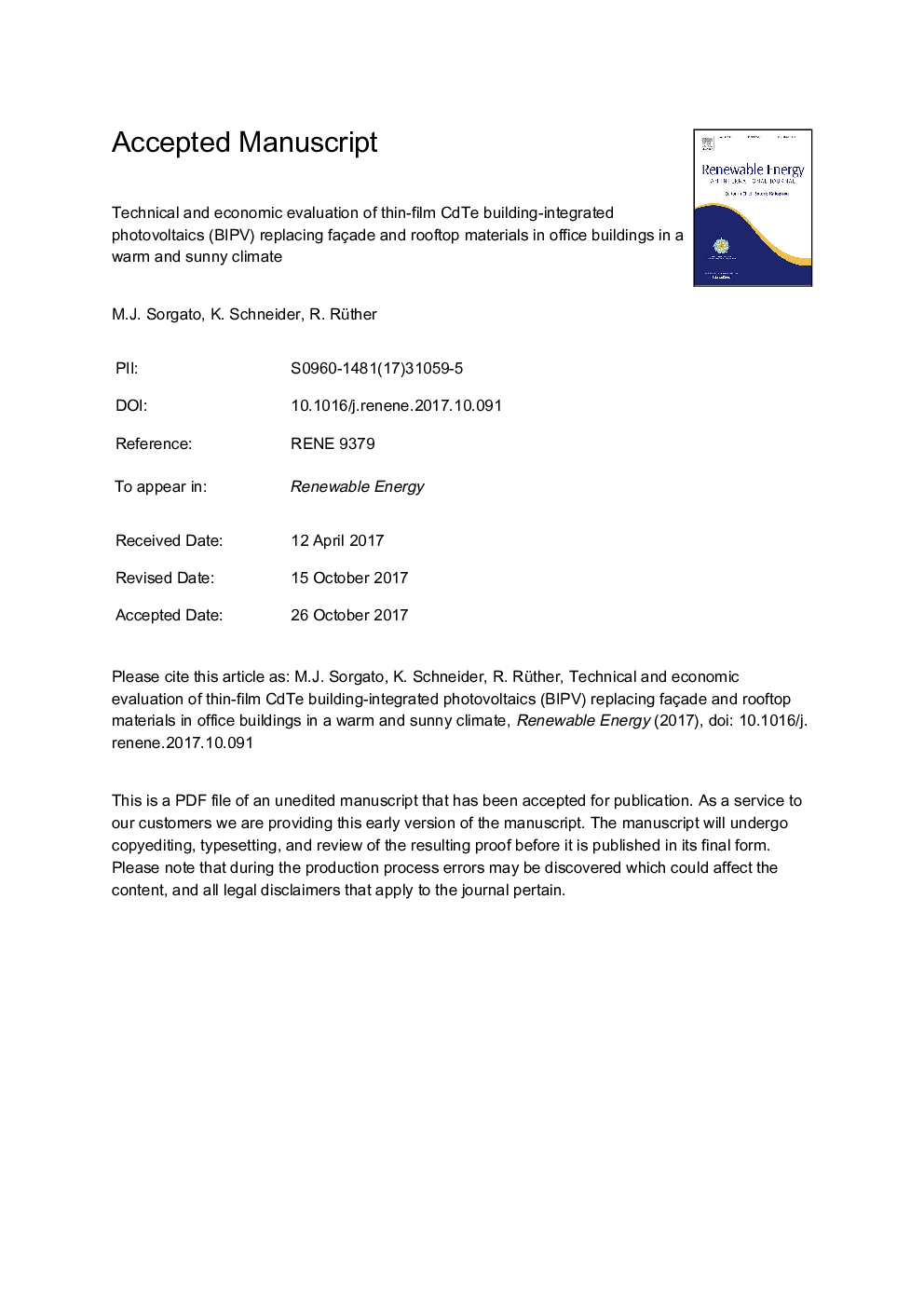| Article ID | Journal | Published Year | Pages | File Type |
|---|---|---|---|---|
| 6764923 | Renewable Energy | 2018 | 40 Pages |
Abstract
A great challenge and trend for sustainable buildings is to reduce electricity consumption, and at the same time try to supply their own energy demand with self-generation. The project should be development focused on sustainability, explore the passive strategies and the energy generation potential of façades and roof. In this paper we analyze for the first time in Brazil and under current solar photovoltaic (PV) module prices, the technical and economic potential of integrating state-of-the-art, frameless, glass-glass thin-film cadmium telluride (CdTe) PV modules on a commercial building façade and roof, and evaluate the economic feasibility of replacing traditional façade materials like architectural glass and aluminum composite material with sleek black PV modules in six Brazilian cities. The technical analysis consisted in evaluating the energy performance of a four-storey office building for each of the six cities under analysis. The technical analysis showed that it is possible to fully meet the energy demand of the office building with PV integration in all the Brazilian cities evaluated. While the local climate has a significant impact on the energy consumption due mostly to air conditioning loads, PV energy production follows the same trend. Most importantly, the economic analysis showed that with the declining costs of photovoltaics, replacing conventional façade building materials with PV modules is not only an innovative approach but also of economic benefit.
Related Topics
Physical Sciences and Engineering
Energy
Renewable Energy, Sustainability and the Environment
Authors
M.J. Sorgato, K. Schneider, R. Rüther,
